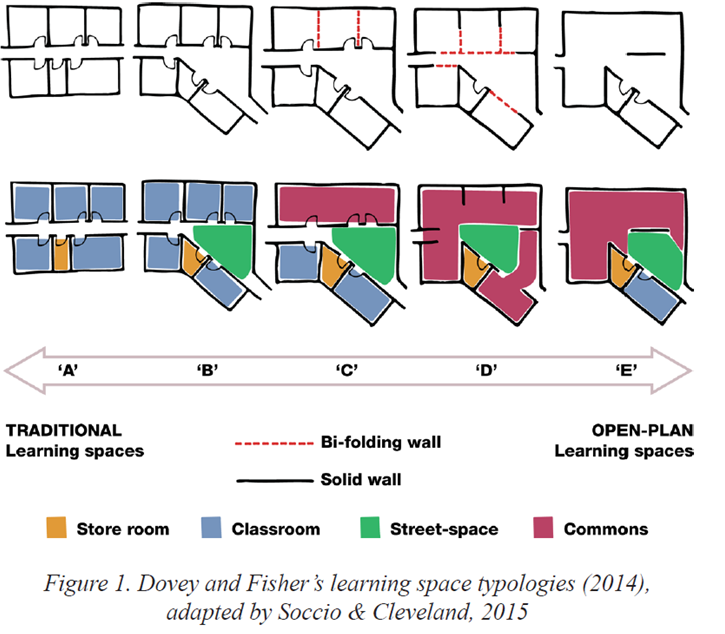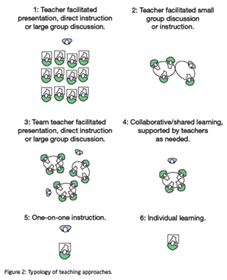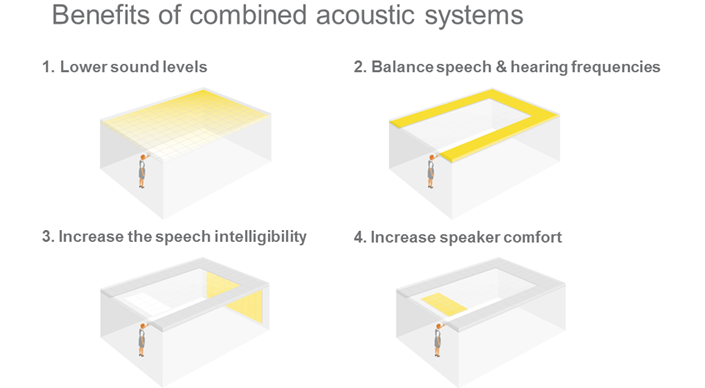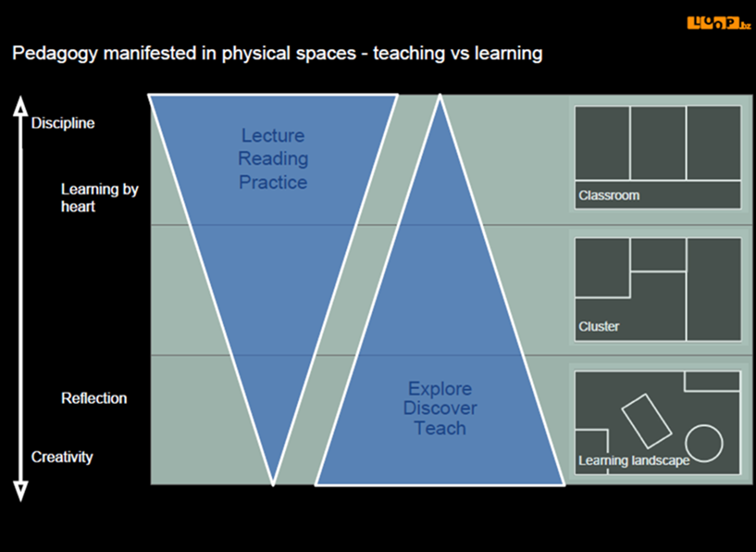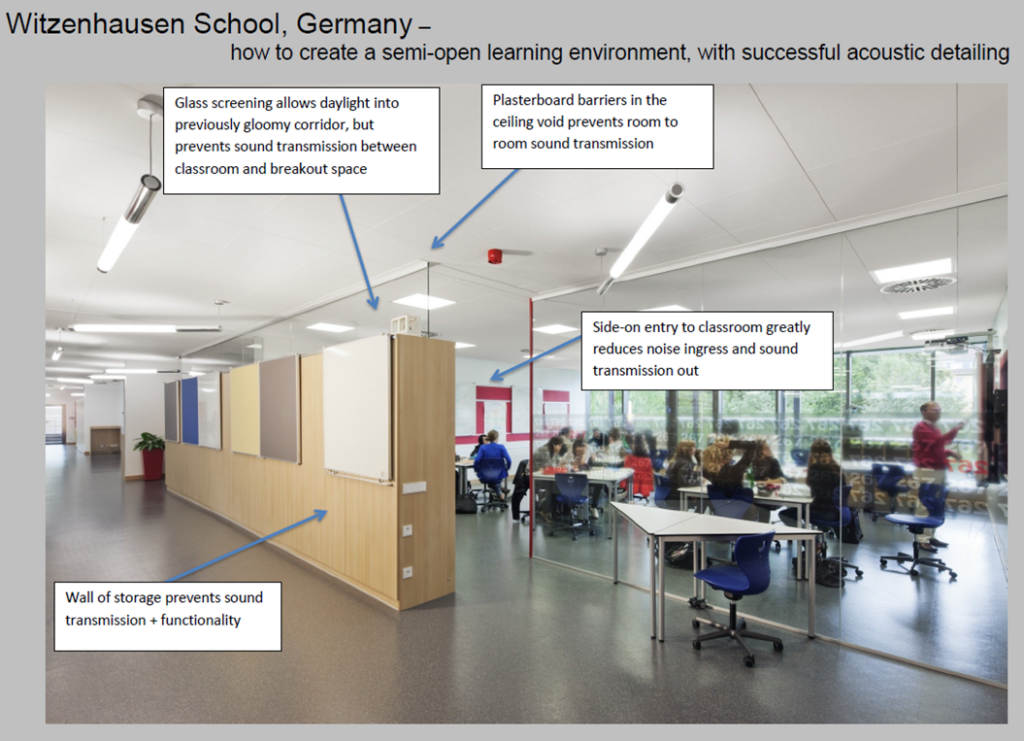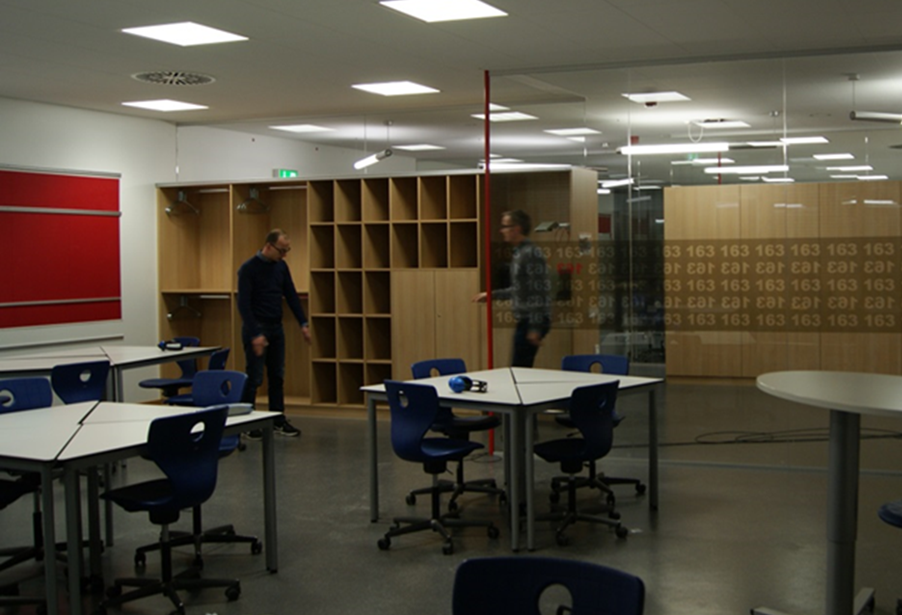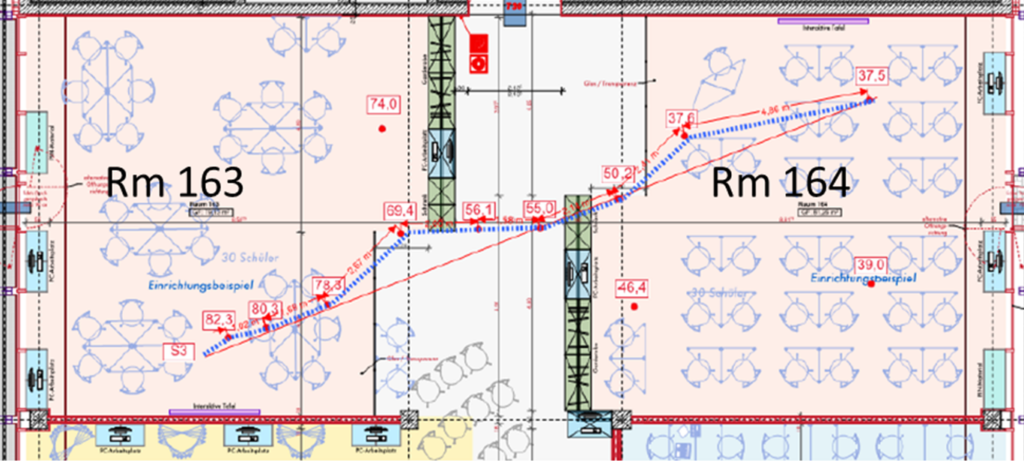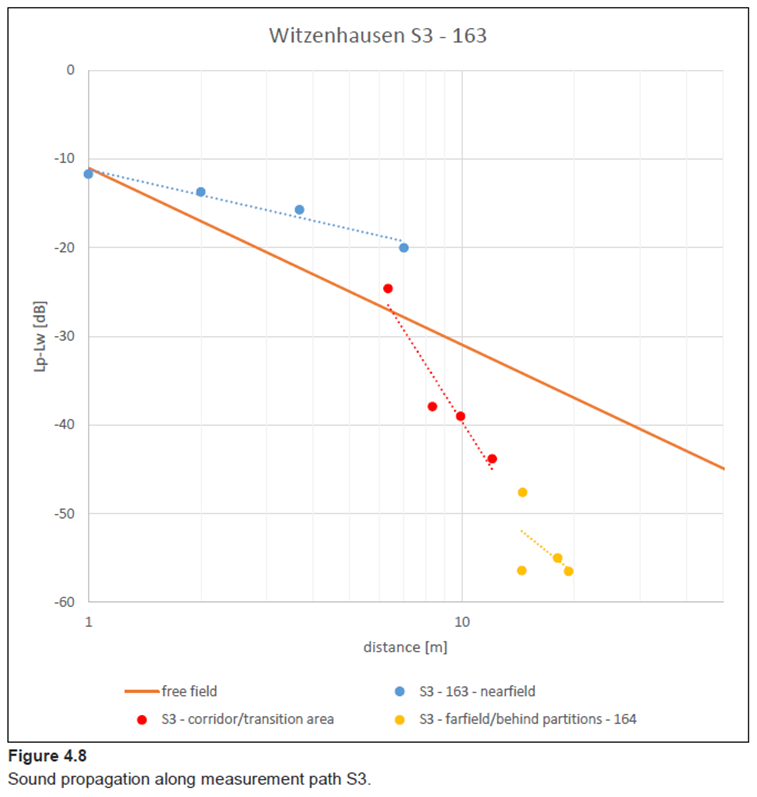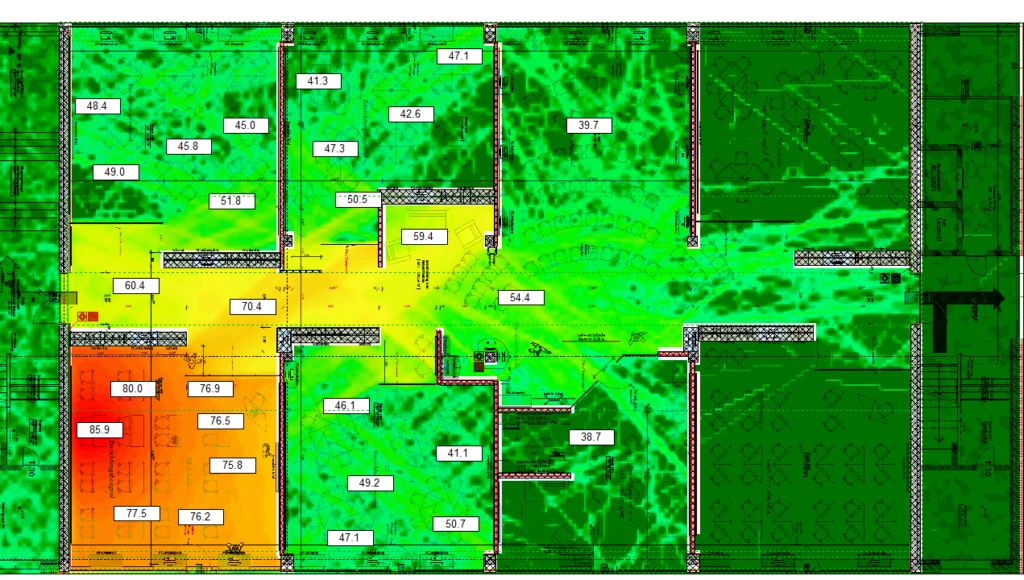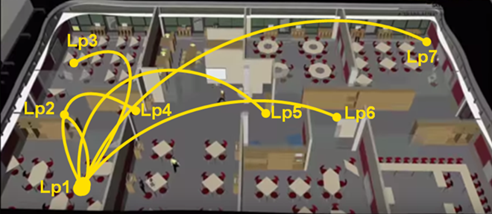
Noise is not something we only hear but something we feel, making teachers stressed and disturbing students. However, what feels like unwanted noise for some over distance, may be wanted sounds for another locally. This can create a conflict, so it is important to be able to separate these in order to create a sound environment which has the acoustic control. In order to match the appropriate activities to make the learning environment fit for purpose.
What do we mean by Innovative Learning Environments?
There is much talk about “innovative learning environments” and what they should be like. But exactly what are they? A recent study mapped out typologies of learning spaces in an illustrative sliding scale, from traditional and cellular to progressively more open spaces. (Fig. 1) The study also mapped out potential corresponding typologies of teaching approaches, see (Fig. 2)
Assessing which space is suitable for a specific school required much more than just understanding acoustics. Understanding; culture, leadership and organization are vital. However, this is quite complex so we thought it would be useful to identify schools along this sliding scale which are working well and as good practice examples. As to explain how they work and perhaps even understand more clearly why they have been working successfully. In this case, for some years as assessed by their users; the head teacher, the teachers and the students.
Why are more than one teaching style / lecture encouraged?
Do we even need schools with anything other than traditional “Type A”classroom layouts?
Well to try to answer this, see this example below (a summary of a survey of how 2000 students felt with each of their teachers, courtesy of @EduWells). This highlights some of the reasons why learning activities are moving away from being teacher focused. To be more student focused / centered to encourage engagement and participation.
If this is how students see their learning environments, imagine how much they might be affected by additional noise. Associated and distractions and the potential for increased disturbance…..
The need for good classroom acoustics has been well documented.
There are many studies and examples about the need for good classroom acoustics. These point to increased cognitive load*, work load stress** and lower test scores*** in classrooms with more noise. So it is good to know that these can be minimized when we look at classroom acoustic solutions to improve the acoustic performance. See the example below showing the application of high performance sound absorbing materials in the form of 1. A full covering suspended ceiling to lower the sound levels 2. Additional low frequency absorption to address low frequency reverberance 3. Wall absorption to reduce unwanted late reflections and 4. Localised speech feedback for a fixed position speaker – for a typical traditional cellular classroom illustrated below:
From an acoustic perspective it is quite straightforward how to secure a good acoustic environment in traditional classrooms. Depending on the volume, geometry and construction of the materials. It is even possible to make these inclusive for the most demanding conditions required for hearing impaired students. However, moving from traditional cellular classroom creates more challenges around the sound environment when doors and walls are removed.
What research is exploring this further?
As support to a larger in depth ILETC project – Innovative Learning Environments and Teacher Change research study – colleagues in Ecophon EDUnet have been lifting out interesting European good practice examples. Ones which fit into a range or the previously mentioned “Typologies of Space” from B-C (see ILETC referenced diagram Fig.1 above). Which have been operating successfully for a number of years and have good sound environments. And crucially, where leadership and a culture where the teaching and learning activities are effective in their non-traditional, more open spaces. (see ILETC teaching typologies in Fig.2 above) Follow @projectILETC.
To match the teaching and learning activities to the appropriate spaces requires as mentioned earlier a number of aspects. The important consideration of and an understanding of; the leadership, pedagogic approach and culture of the school. The model below developed by Mie Guldbaek Broens, LOOP.bz. Gives an indication of the teaching / learning approach and activity options related to potential appropriate space.
Combine this with the gradual release of responsibility model, where responsibility is devolved from the teacher towards the student and their learning activities.
What examples are there?
One of these interesting European good practice case studies has been of great interest to our EDUnet group. In particular Holger Brokmann locally in Germany has paid particular attention to over recent years is Witzenhausen School. The school set out from the beginning before the remodelled space was designed to have input from the teachers about how they would like their learning spaces to be. Along with the architect they set out to create an activity based design which included an appropriate acoustic design. The school has been received very well since being remodelled over 5 years ago,even after several changes in leadership. After visiting on many occasions and receiving very positive ongoing feedback about the acoustic environment from the teachers and students. We set out to explain how this unique activity based acoustic design supports this school.
Using a sound power source, we wanted to understand how the sound level dropped between the semi-open classrooms and across the main spaces. Here Lp1 is the sound power source and Lp2-Lp7 are the receiving positions we wanted to look into. In order to understand how much sound reduction was occurring between the spaces despite there being now doors.
As shown above, there are no doors. Only overlapping full height glass partitions or cupboard furniture combined with glass partitions up to the structural soffit. In the right hand photo above, We also see the classroom side of the cupboards which have the coathangers adding absorption when the coats are there and the open shelving helps to scatter and diffuse the classroom sounds. The integrated red wall absorbers also reduce sound reflections in and out of the open doorways.
Sound level reduction as measured from the classroom spaces through the circulation space and through to the neighbouring classroom space. This was measured by Jeroen Vugts of LBP Sight from the Netherlands who has a keen interest in these types of spaces and has previously presented how to make acoustics work in open spaces at EIAS2015 see his presentation about another school, DeWerkplaats in Netherlands in a previous Acoustic Bulletin post here.
Anyway, it is time for some numbers which you can see below which demonstrate the effectiveness of this acoustic design where the overlapping door entrances work very effectively as sound traps. Sound power source measurements -…..
Sound level reduction as measured from the classroom spaces through the circulation space and through to the neighbouring classroom space.
Classroom spaces (nearfield):
RT: 0.48s (Reverberence)
C50: 8dB (Speech clarity)
STI values >0.7 (Good – Excellent, orange to red in the image below) (Speech Transmission Index)
Circulation and break-out spaces (transition area):
STI values around 0.5 (Poor – Fair, light green, yellow to light orange) (Speech Transmission Index)
Adjacent / neighbouring classrooms (farfield):
STI values <0.2 (Bad, shades of green) (Speech Transmission Index)
Sound Mapping:
Sound reduction is illustrated below in dB and by colour variations and the perception of speech (STI values) fits very well with the colour variations. red / orange being good – excellent
In the classroom spaces speech can be heard clearly and there are few unexpected distractions and an absence of disturbance from adjacent spaces. The effectiveness of the overlapping doorway sound traps make the learning spaces more acoustically closed than first appears while supporting the school to be more educationally open and transparent with their teaching and learning activities. To see this work in reality watch the walk through movie of Witzenhausen school here.
For more info about this semi-open school, please contact us here, Follow @EDU_Colin or see the paper “Effective open learning landscapes and the well-being of teachers
and students”, presented at ICBEN2017 here based on the acoustic report by Jeroen Vugts LBP Sight here.
References:
*Ljung, R., Israelsson, K. & Hygge, S. (2013). Speech Intelligibility and Recall of Spoken Material
Heard at Different Signal-to-noise Ratios and the Role Played by Working Memory Capacity.
Applied Cognitive Psychology, 27 (2), 198-203.
**M. Oberdoster; G. Tiesler. Modern School Acoustics – On teaching styles, room acoustics,
teachers’ health and pupil behaviour. 2006.
***B. M. Shield, J. E. Dockrell, “The effects of classroom and environmental noise on children’s
academic performance ICBEN 2008.

